Did you know that some foods can mess with your medicines? This can happen even with everyday foods like grapefruit or coffee. It is important to avoid such food-drug interactions to prevent any adverse events and maintain the effectiveness of the medicine1.
In this article, we’ll discuss about the food interactions which can occur with the drug, metformin. Metformin is a common medicine prescribed for the management of Type 2 Diabetes. We’ll talk about Metformin’s intricate relationship with foods, when to take it, and more2.
Did you know?
Metformin is a drug that helps bring down your blood sugar levels. It is mainly used to manage Type 2 diabetes3.
Metformin is available in different doses and forms. These include tablets, oral solutions, and even extended-release tablets. Your doctor will prescribe the right form and dosage based on your health condition and lifestyle.
Mostly, Metformin is stored at room temperature. It should be placed away from moisture or heat. Also, keep it out of reach of children.
Metformin mainly works by reducing glucose production by the liver. By doing so, it helps lower overall blood sugar levels. It also improves the body’s response to insulin and helps cells use insulin better, making it easier for them to take in glucose from the blood4,5. If you have type 2 diabetes, your healthcare provider may prescribe Metformin.
Certain food items and alcohol can affect Metformin’s effects6,7. We will discuss this in detail in the coming sections.
In my experience, I have observed that use of metformin might lead to vitamin B12 deficiency. It is important to be aware of the potential risk and consider regular monitoring of your vitamin B12 levels, as well as discussing the need for supplementation with your healthcare provider13.
Dr. Siddharth Gupta, BAMS, MD (Ayu)
Food choices play a big role in managing type 2 diabetes. While they don’t directly counteract Metformin’s actions, overeating or bad food choices can increase its efforts to control blood sugar.

Certain foods can get in the way of Metformin. These are processed carbohydrates, saturated fats, trans fats, and too much sodium. While not opposing Metformin directly, they can spike up your glucose and insulin levels.
Detailed list of Foods to Avoid
Saturated fats can also make you more insulin resistant, which can make weight loss and blood sugar management more difficult. Fatty foods can delay gastric emptying and contribute to, prolonged postprandial hyperglycaemia (high blood sugar levels after food), which can be problematic over the long term. Sodium does not directly affect blood glucose or Metformin, but it increases cardiovascular risk and blood pressure, which are comorbid concerns in diabetes8. Also, some studies6 have found that a high-fat, high-calorie diet can slow the absorption of metformin.
So, although these foods don’t directly interfere with Metformin’s pharmacologic action, they can oppose its intended effect by raising blood glucose levels, adding to Metformin’s workload.

Some foods can make it hard for Metformin to work. Yet, some others support Metformin’s actions. These are complex carbohydrates, healthy fats, fibre, lean proteins, and select fruits and vegetables9.
Detailed List of Beneficial Foods
Consuming these foods along with Metformin can support your blood sugar balance. Plus, it can help keep your weight in check. But please note that not all fruits are low glycaemic. Portion control and glycaemic index should be considered especially if you are diabetic. Your doctor can guide you best on what type of foods you can eat based on your blood sugar control.
Based on my experience, I have found that metformin typically does not cause low blood sugar (hypoglycaemia) when taken alone. However, it is important to be cautious when combining metformin with other diabetes medications like insulin or gliclazide, as these combinations may increase the risk of hypoglycaemia13.
Dr Rajeev Singh,BAMS
Food choices matter a lot in diabetes, especially if they interact with drugs like Metformin. Here are some specific food items that can affect metformin.
Grapefruits are beneficial but found to interact with many drugs including Metformin. An old study on non-diabetic rats showed grapefruit juice might trigger a potentially fatal condition called lactic acidosis when mixed with Metformin10. Lactic acidosis is a rare but serious side effect of metformin, typically in patients with renal impairment or other risk factors.
Grapefruit inhibits CYP3A4 enzymes, affecting drugs metabolized by this pathway (e.g., statins, calcium channel blockers). However, Metformin is not significantly metabolised by CYP enzymes, including CYP3A4. So, this seems to be an overemphasised claim. Yet, we don’t have any human case studies indicating a similar reaction with Metformin and grapefruit so far. More research is needed here.
Alcohol consumption may also interact with Metformin’s action. Taking alcohol and Metformin together may cause lactic acidosis, a rare but serious condition7. Still, this could happen only if you drink alcohol heavily and regularly. It can also swing your blood glucose levels both ways – high (hyperglycaemia) and low (hypoglycaemia). Moderate drinking usually isn’t problematic unless you have kidney or liver issues. (Note that moderation as per guidelines is termed as no more than one drink per day, for women, and for men, a moderate amount is no more than two drinks per day.)
Drinking alcohol regularly can also exacerbate kidney and liver issues, so talk with your doctor if you suffer from non-alcoholic liver disease or kidney disease before consuming alcohol with Metformin.
Wondering how to take metformin the right way? Let’s see how and when to take Metformin for best results.
When taking Metformin, timing is important for minimizing side effects (like GI upset) and optimizing blood glucose control. Normally, immediate-release tabs are taken twice a day while extended-release tabs are taken once daily. Keeping to this schedule helps manage diabetes effectively.
Taking Metformin with meals can cut down its side effects like gas, bloating, nausea, and diarrhoea. Extended-release Metformin is usually taken with the evening meal to reduce gastrointestinal side effects and enhance overnight control.
Metformin, a widely prescribed medication for managing Type 2 diabetes, offers significant benefits, but users should be aware of potential side effects. Commonly reported metformin side effects include gastrointestinal symptoms like nausea, diarrhoea, and abdominal discomfort, although these often subside with continued use.
Continued use often leads to a gradual diminishment of these symptoms.
Metformin Side Effects in Females:
Metformin Side Effects in Males:
If your health changes or you spot signs like muscle pain, feeling tired, abdominal complaints, uneven heartbeats, or problems in breathing, get immediate medical help. These could be early signs of lactic acidosis. It’s a serious but rare side effect of Metformin.
Also Read: Pantoprazole Foods to Avoid
When taking metformin for PCOS, it’s advisable to be mindful of certain foods. Limiting high-carbohydrate and sugary foods can enhance its effectiveness. Avoid excessive alcohol consumption and consider reducing intake of processed foods. Incorporating a balanced diet with whole grains, fruits, and vegetables is beneficial. Consulting with a healthcare professional for personalized dietary recommendations is essential for optimal PCOS management with metformin.
Another interesting aspect of Metformin is its effect on body weight. Over time, people using Metformin have reported a slight weight loss. But remember, this isn’t guaranteed for all users.
Researchers have noticed a link between Metformin and weight loss, which might be due to reduced hunger cues12. However, metformin’s weight loss effect is thought to be multifactorial, including improved insulin sensitivity, decreased hepatic glucose production, possible mild appetite suppression, and effects on gut hormones like GLP-1. But keep in mind, weight management isn’t only about medicine. It’s also about eating healthy and exercising regularly.
Also Read: Foods to Avoid While Taking Duloxetine
Long-term weight loss linked with Metformin varies from person to person and may not be as much as you’d want. An average drop of around six pounds after a year of treatment is seen. To kickstart and keep up the weight loss, diet tweaks and exercise are crucial elements as well.
Simply put, no. Metformin is specially made for patients with Type 2 diabetes. Though it has shown results in helping non-diabetic obese patients lose weight, this is an ‘off-label’ use and not approved by the FDA for non-diabetics. However, metformin is sometimes used off-label in PCOS and prediabetes with some evidence of benefit.
Also Read: What To Eat During Food Poisoning?
Dealing with food-drug interactions can be hard. However, understanding your body’s specific reactions can help keep good health and make your medication work best.
In short, matching wise food habits with Metformin can boost its effects in controlling Type 2 diabetes while making the wrong choices can increase its workload. Often, it’s about learning the potential interactions and making small food swaps in our daily meals. If you have diabetes, it’s best to discuss with your doctor and design the best diet plan that is suitable for your condition and does not impact your medications.
Moreover, simple things like watching your salt intake, staying hydrated, and exercising regularly can have a beneficial impact on your overall health. Remember, tiny tweaks in your diet and lifestyle can yield big health gains over time!
Also Read: 12 Foods That Are Necessary For A Healthy Liver!
As of now, there’s not enough proof to say coffee messes up Metformin. But remember, too much of caffeinated drinks might cause hydration issues. So, drink moderately.
Metformin may cause nausea, and if you also take insulin, Metformin can cause low blood sugar levels. This can be dangerous if you’re unable to keep liquids down, so call your doctor immediately if this is the case and you’re having trouble treating low blood sugars.
There are no adequate studies in women for determining infant risk when using this medication during breastfeeding. However, studies have shown that Metformin passes into breast milk in very low amounts but is generally considered compatible with breastfeeding. The American Academy of Paediatrics (AAP) and other authorities regard Metformin as usually safe during lactation. However, consult a doctor who will weigh the potential benefits against the potential risks before prescribing this medication while breastfeeding.
You may notice improvement in your blood glucose control in 1 to 2 weeks, but the full effect of blood glucose control may take up to 2 to 3 months. Ask your doctor if you have any questions about this.
Health pros suggest a low-carb, high-protein breakfast might work well with Metformin. Think eggs, lean meats, whole grains, and fresh fruits. It gives you main nutrients, lowers glycaemic spikes, and keeps you full till lunchtime.
Metformin-induced diarrhoea is thought to result from its impact on the gastrointestinal tract, causing increased fluid secretion and alterations in gut motility. Metformin increases intestinal glucose and bile acid concentrations, which can cause osmotic effects leading to increased fluid retention in the bowel. It may also alter gut microbiota and serotonin pathways affecting motility. Consultation with a healthcare professional is recommended for those experiencing persistent or severe diarrhoea while using metformin.
Metformin typically does not cause hypoglycaemia (low blood sugar) when used as a monotherapy. However, in combination with other diabetes medications that can lower blood sugar, there may be a higher risk of hypoglycaemia. It’s essential to follow healthcare provider guidance and monitor blood sugar levels regularly.
Metformin is occasionally prescribed during pregnancy for gestational diabetes but should only be used under the guidance of a healthcare professional. Individual health considerations and potential risks to the mother and foetus need to be carefully evaluated before making any decisions about medication during pregnancy.
While metformin is generally considered safe for the kidneys, there’s a rare risk of lactic acidosis, a serious condition. It’s crucial for individuals with kidney issues to consult with a healthcare professional to determine the appropriateness of metformin and to monitor kidney function regularly.
Yes, metformin is known to reduce insulin resistance, a key factor in type 2 diabetes. It improves insulin sensitivity, allowing cells to better respond to insulin and promoting better regulation of blood sugar levels.
No, metformin is not habit-forming. It is an oral medication commonly prescribed to manage type 2 diabetes and does not possess addictive properties. Always follow your healthcare professional’s guidance on medication use.
Metformin for prediabetes can be effective in slowing or preventing the progression from prediabetes to diabetes. However, individual responses vary, and it’s essential to consult with a healthcare professional for personalized advice on its use and to incorporate lifestyle changes for comprehensive prediabetes management.
Stopping metformin suddenly can mess with your blood sugar. Always talk to your doctor before making any changes to your medication, so they can help you do it the right way.
Metformin is generally considered safe for the liver, but in rare cases, it may cause an increase in liver enzymes. Regular monitoring and consultation with a healthcare professional are recommended to ensure the medication’s safety and address any potential concerns.
Signs that metformin is working include stable blood sugar levels, better insulin sensitivity, and reduced symptoms related to the medical condition. Regular check-ups with a healthcare professional help track and confirm its effectiveness for each individual.
Disclaimer: The information provided here is for educational/awareness purposes only and is not intended to be a substitute for medical treatment by a healthcare professional and should not be relied upon to diagnose or treat any medical condition. The reader should consult a registered medical practitioner to determine the appropriateness of the information and before consuming any medication. PharmEasy does not provide any guarantee or warranty (express or implied) regarding the accuracy, adequacy, completeness, legality, reliability or usefulness of the information; and disclaims any liability arising thereof.
Do you wonder what duloxetine is? Duloxetine belongs to the serotonin-norepinephrine reuptake inhibitors (SNRIs) class of drugs and is used in the management of mental health conditions like major depressive disorder (MDD) and generalised anxiety disorder (GAD) and other conditions like diabetic neuropathy1, fibromyalgia2, and chronic musculoskeletal pain. For individuals on duloxetine, it is vital to know about food and drug interactions of the medication and its side effects as these factors may influence the effectiveness of the medicine3.
Before exploring which foods and substances to avoid when on duloxetine, let’s first understand how the medicine works and its interactions with other drugs, supplements and herbal products along with other considerations. Each person responds differently to a medicine, so you should consult your doctor before making any major changes to your medicine.
Duloxetine works by increasing the levels of serotonin and norepinephrine in the brain. These are important chemicals that affect mood and pain sensations. Duloxetine does not let these chemicals be reabsorbed, allowing them to stay active in the spaces between nerve cells.
This action helps improve communication between nerve cells, influencing mood positively and reducing the perception of pain signals. Essentially, duloxetine’s role is to enhance the effects of serotonin and norepinephrine, making it effective in treating conditions like major depressive disorder, generalised anxiety disorder, and certain types of chronic pain. Individual responses to the drug may vary; therefore, it’s essential for individuals to consult their doctor for personalised information and guidance regarding duloxetine uses.
Did you know?
If you’re on duloxetine, some foods and drinks are best avoided. Here’s some foods you should watch out for.
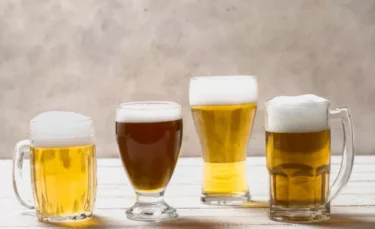
It is safer to avoid alcohol if you are on duloxetine as the combination may increase some side effects of the drug and may lead to potentially harmful interactions. Both alcohol and duloxetine can cause CNS depression, potentially leading to excessive sedation. Alcohol may also interfere with duloxetine’s ability to improve mood, reducing its therapeutic benefit. Additionally, since both are metabolised in the liver, using them together increases the risk of liver toxicity4.
Taking alcohol with duloxetine could cause:
Both the manufacturer (FDA label) and doctors strongly recommend limiting or avoiding alcohol, particularly if you have a history of liver disease or depression. Always check with your doctor before consuming alcohol during duloxetine treatment4.
I want to emphasise that when prescribed to take duloxetine, it is important to especially avoid drinking alcohol as it may potentially increase the risk of liver damage. Prioritising your health and adhering to your doctor’s recommendations will ensure the safest and most beneficial use of this medication.
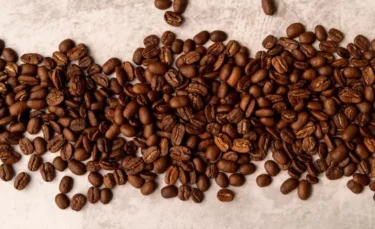
Keep an eye on your caffeine intake while taking duloxetine. Although caffeine doesn’t directly interfere with how the medicine works, it may worsen certain side effects, such as jitteriness, anxiety, or trouble sleeping, especially if you’re sensitive to stimulants. In some cases, too much caffeine may reduce duloxetine’s calming benefits by increasing restlessness or anxious feelings5.
To manage your caffeine intake:

Although duloxetine is not a monoamine oxidase inhibitor (MAOI), some people worry about its interaction with high-tyramine foods. However, current research has not shown any significant risk, and duloxetine does not inhibit the MAO enzyme. That said, if you want to be cautious, it’s you may limit foods high in tyramine, such as:
If you are curious to know the drugs that may not work well with duloxetine, let’s find out. Always inform your doctor about all the medicines, supplements, or herbal products you currently take or are planning to take, to help avoid any possible interactions.
Taking duloxetine with other medicines for mental health issues may increase side effects or cause complications.
Some examples of such medicines include:
How to manage drug interactions?
Here are a few simple precautions to help manage drug interactions while on duloxetine:
NSAIDs could increase the risk of gastrointestinal bleeding when used with duloxetine, which could lead to:
How to manage this interaction?
Here are a few precautions to manage the interaction of NSAIDs with duloxetine:
Combining amphetamines with duloxetine may lead to side effects like:
How to manage this interaction?
These precautions may help you manage the interactions of amphetamines with duloxetine:
You need to know how supplements and herbs can interact with duloxetine. So, always discuss all supplement and herbal product use with your doctor7.
There are no specific reported interactions between duloxetine and most vitamins or minerals. However, it’s still important to inform your doctor about any supplements you take, as certain combinations may affect how well the medicine works.
Some herbal supplements may not be safe to take with duloxetine. For example, combining St. John’s Wort with duloxetine may increase the risk of serotonin syndrome, a potentially serious condition linked to excess serotonin in the body6. Kava, another herbal product, may increase the risk of liver damage when taken with duloxetine. While there is no strong evidence that these herbs reduce the effectiveness of duloxetine, they can increase its side effects or lead to harmful interactions.
Some tips on safe herbal usage:
If you feel nauseous or unwell while taking duloxetine, it is advisable to avoid heavy meals and spicy or greasy foods. Easily digestible foods can reduce stomach discomfort and make you feel more at ease. Always let your doctor know if your nausea persists or worsens.
Also Read: 13 Foods That Are Difficult To Digest!
Certain factors like an individual’s vaccination status, laboratory test requirements, and health history can influence the effect of duloxetine.
Based on available data, there are no known interactions between duloxetine and most vaccines. However, it is advisable to consult your doctor before taking a vaccine if you are on duloxetine.
Duloxetine is not known to interfere with common lab test results. However, if you have been scheduled for any tests, let your doctor know you are taking duloxetine for better interpretation of your test results.
Your past and present health conditions can influence the effect of duloxetine. It is advisable to share your full medical history with your doctor, especially if you are pregnant or plan to conceive or have or have had:
Also Read: 12 Foods That Are Necessary For A Healthy Liver!
Some duloxetine side effects may specifically affect women and may vary from person to person:
Duloxetine may lead to certain side effects that are more commonly seen in men:
If you experience any of these symptoms, it is essential to consult your doctor and discuss your concerns openly.
Duloxetine may affect sexual health in both men and women. These effects can vary but may include:
Also Read: What To Eat During Food Poisoning?
Understanding how duloxetine may interact with certain foods, beverages, drugs and more supports better health and more effective use of the medication. It is important to consider your overall health and lifestyle when taking medication.
While on duloxetine, it is recommended you stay in touch with your doctor. Always share details of other medications and supplements you are taking with your doctor as they can influence your treatment. This allows your doctor to check for possible interactions, devise coping strategies, and adjust your treatment if needed.
Also Read: Pantoprazole Foods to Avoid
The onset of duloxetine’s therapeutic effects varies, but many individuals may start experiencing improvement in their symptoms within 1 to 4 weeks after initiating treatment. However, it’s essential to consult with a healthcare professional for personalised guidance on the duration of duloxetine’s effectiveness.
Taking duloxetine during the third trimester of pregnancy may increase the risk of neonatal adaptation syndrome, which can cause symptoms such as tremors, irritability, feeding issues, and breathing problems in newborns9.
Speak to your doctor before using duloxetine during pregnancy to weigh the possible risks and benefits based on your health and your baby’s well-being.
Taking duloxetine at night is generally acceptable, but it’s advisable to follow your healthcare provider’s recommendation for the most effective and personalised dosing schedule. Always consult with your healthcare professional to ensure the dose timing aligns with your specific health needs.
Duloxetine and Wellbutrin should be used cautiously together because they affect different neurotransmitters in the brain. Taking them together may increase the risk of side effects or adverse reactions. Consulting a doctor may help manage potential drug interactions, ensuring a safer and more effective treatment plan10.
Taking duloxetine and gabapentin together requires caution because both medications can have central nervous system effects. The combination of these two medicines may increase the risk of side effects such as dizziness, drowsiness, or difficulty concentrating. Consulting a doctor is crucial to assess individual factors, minimise risks, and ensure a safe treatment plan.
Yes, fatigue is a common side effect of duloxetine. If you experience excessive tiredness or drowsiness while taking the medication, you should inform your doctor and discuss potential adjustments in dosage or alternative treatment options.
Yes, constipation is a recognised side effect of duloxetine. If you encounter persistent constipation while using duloxetine, it is recommended to consult with your healthcare provider for potential management strategies or adjustments to your treatment.
Duloxetine may contribute to increased energy levels in some individuals as it affects neurotransmitters. However, individual responses vary, and if you experience concerns about energy levels or fatigue while taking duloxetine, consulting your doctor is advisable for personalised guidance.
Duloxetine may not be suitable for individuals with bipolar disorder, as it can potentially trigger manic or hypomanic episodes. It is essential to discuss any history of bipolar disorder with a doctor before starting duloxetine to ensure an appropriate treatment plan.
Disclaimer: The information provided here is for educational/awareness purposes only and is not intended to be a substitute for medical treatment by a healthcare professional and should not be relied upon to diagnose or treat any medical condition. The reader should consult a registered medical practitioner to determine the appropriateness of the information before consuming any medication. PharmEasy does not provide any guarantee or warranty (express or implied) regarding the accuracy, adequacy, completeness, legality, reliability or usefulness of the information; and disclaims any liability arising thereof.
Pantoprazole is a medication that belongs to the drug group ‘proton pump inhibitor (PPIs)’, which are often prescribed by doctors for stomach acid-related issues. These commonly include health conditions like peptic ulcer disease, Zollinger-Ellison syndrome, NSAID-induced ulcer and gastroesophageal reflux disease (GERD), among others1. But like any other medicine, there are some do’s and don’ts with pantoprazole as well. Understanding these are key to safe usage and optimal results.
So, in this guide, we’ll talk about pantoprazole. What is it? Why is it needed? Which foods and drinks should be avoided while on this medication? We’ll also discuss drug and nutrient reactions that might occur. Plus, useful tips on food choices will be shared, which can help improve your treatment results. Lastly, preventive steps and monitoring measures are discussed to make the treatment safer for you.
Drawing from my observations and experience, I strongly recommend avoiding food items that may exacerbate gastroesophageal reflux disease (GERD) when undergoing medication. So, it might be best to refrain from consuming spearmint and peppermint while taking medications like pantoprazole.
Let’s begin the discussion with an overview of pantoprazole. We’ll discuss what it is, why it’s used and how it works. Then, delve into what food and drinks to avoid while taking this medication.
It’s a type of PPI (proton pump inhibitor) which doctors prescribe for some gastric health problems. These helps manage issues wherein too much acid is produced in the stomach, leading to certain health conditions such as-
Pantoprazole should ideally be taken 30–60 minutes before a meal, usually in the morning, for optimal proton pump inhibition. Pantoprazole can have adverse effects, including , headache, and upper respiratory tract infection. Thus, pantoprazole should only be taken with a doctor’s prescription.
Now, let’s talk about its uses1.
Pantoprazole inhibits proton pumps in stomach wall lining cells, known as parietal cells. They make and release hydrochloric acid into the stomach. Pantoprazole irreversibly inhibits the H⁺/K⁺ ATPase enzyme in the apical membrane of parietal cells, leading to suppression of acid secretion. So, it helps manage symptoms related to acid reflux, hyperacidity, or mucosal damage due to excess acid1.
As someone who has made observations and collected experience in this matter, I would suggest avoiding the consumption of orange juice while taking medications for gastroesophageal reflux disease (GERD), such as pantoprazole. Orange juice, due to its high acidic nature, may have the potential to exacerbate GERD symptoms. Thus, opting for alternative beverages with lower acidity might be a more suitable choice when taking GERD medications and minimise discomfort.
Certain food and drinks may worsen GERD symptoms even while consuming pantoprazole. To get the best out of your medication, avoid the following items:

Acidic foods can worsen GERD. They stimulate your stomach to produce even more acid. Plus, they can irritate the lining of your oesophagus or reduce lower oesophageal sphincter (LES) tone, worsening reflux2. It’s a common myth that they cause more acid to be produced. Examples of acidic foods are:
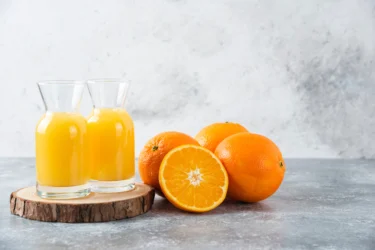
Fruits like oranges, grapefruits, and lemons, and their juices may cause irritation leading to worsening of GERD symptoms in some people.
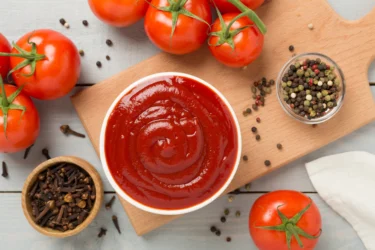
Tomato products like tomato sauce, canned tomatoes and ketchup are highly acidic. So, these can worsen GERD symptoms too.

Caffeine boosts stomach acid levels and may relax the lower oesophageal muscles (LES). This can trigger GERD symptoms. Decaf options or herbal drinks can be helpful instead3,4.

Spicy foods have materials like chili peppers, curry powder, hot sauces etc in them. These all can cause irritation to the oesophagus and fire up stomach acid, causing more heartburn2,3.

High-fat foods can slow digestion and induce acid reflux by relaxing LES. Some examples of high-fat foods to avoid are2,3:
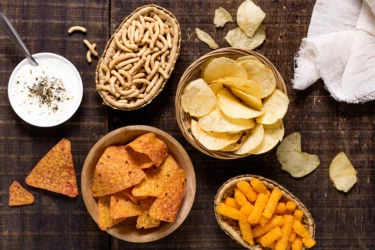
Food items such as chicken chunks, onion rings, and potato chips could make GERD symptoms worse.

High-fat dairy like cream, cheese, butter, and whole milk might worsen GERD symptoms. Try low-fat dairy or other alternatives instead.
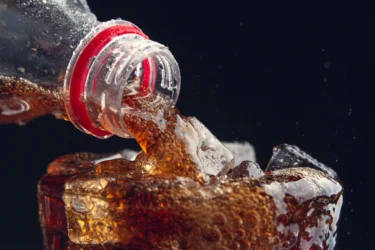
Bubbly drinks like soda and sparkling water can exacerbate GERD symptoms. The bubbles push up pressure in the stomach, spurring stomach contents to flow into the oesophagus3.

Alcohol use can worsen GERD symptoms by relaxing the LES which allows acid to reflux into the oesophagus and worsen GERD symptoms. It also delays gastric emptying, and can irritate the gastric mucosa, all of which exacerbate GERD symptoms. Cutting down on alcohol intake is advised when on pantoprazole. If needed, ask your healthcare provider about what safe levels of drinking are while on this medication5.
When on pantoprazole, it’s vital to know about potential drug and nutrient interactions. Always talk with your healthcare provider before starting any new medicines or supplements.
Pantoprazole could interact with certain medications affecting their usefulness or causing unwanted side effects. Let’s see what these are:
Examples and Effects
Always tell your healthcare provider about the medicines you’re currently on. This can help avoid harmful drug interactions.
Like other PPIs, long-term use of pantoprazole could interfere with the absorption of specific nutrients. This might lead to deficiencies. Here are some examples:
Discuss with your healthcare provider any concerns over potential nutrient interactions. Regular blood tests might be needed to monitor nutrient levels for those using pantoprazole long-term.
To boost overall digestive health and help manage GERD symptoms, a Mediterranean diet or low carbohydrate diet is preferred8. These foods can be included in your diet while on pantoprazole:
Foods with a neutral or slightly alkaline pH help strike a balance in stomach acid levels. They alleviate GERD symptoms. Some examples are:
Foods rich in fibre can boost digestion health and help prevent acid reflux. Some high-fibre options are:
Incorporate lean protein sources in your meal plan. These include:
Also Read: Foods to Avoid While Taking Duloxetine
Certain precautions need to be kept in mind while on pantoprazole to assure both safety and effectiveness. Keep the following points in mind:
Stay alert to side effects, both minor and serious ones like diarrhoea, nausea, headaches and allergic reactions. Always inform your healthcare provider of any long-lasting or severe symptoms.
Severe or persistent diarrhoea could signal Clostridioides difficile-associated diarrhoea, a rare but serious complication of long-term PPI use1.
Acute interstitial nephritis (AIN), a condition affecting the kidney, is also a rare but documented adverse effect of PPIs including pantoprazole.
Also Read: Best Summer Foods to Keep Your Body Cool
Correct dosage, duration of treatment and precautionary measures vary as per the specific populations:
Also Read: What To Eat During Food Poisoning?
Knowing which foods and drinks to avoid, how to monitor medicine interactions, and adopting healthy eating habits are essential when on pantoprazole for maximum benefits and safety. Always work together with healthcare providers to get personalized advice and recommendations, ensuring that pantoprazole remains an effective and well-tolerated treatment for your needs.
How long you are on pantoprazole treatment hinges on your specific health problem and how well you respond to therapy. Always stick to the duration of your treatment as advised by your doctor.
Weight gain is not listed as a common side effect in pantoprazole studies. But everyone’s body reacts differently. If you see great changes in your weight, talk to your healthcare provider.
The right pantoprazole dosage varies based on the individual and the condition treated. Always follow your doctor’s advice on dosage.
Take pantoprazole as directed by your doctor. Usually, it is taken once in the morning 45 minutes before breakfast. Do not break, crush, or chew the tablet/capsule as this can impact its effectiveness.
Disclaimer: The information provided here is for educational/awareness purposes only and is not intended to be a substitute for medical treatment by a healthcare professional and should not be relied upon to diagnose or treat any medical condition. The reader should consult a registered medical practitioner to determine the appropriateness of the information and before consuming any medication. PharmEasy does not provide any guarantee or warranty (express or implied) regarding the accuracy, adequacy, completeness, legality, reliability or usefulness of the information; and disclaims any liability arising thereof.
Diarrhoea, commonly described as the frequent passage of loose or watery stools, is a condition that can range from mild to uncomfortable. While often caused by infections, it may also result from non-infectious factors such as irritable bowel syndrome (IBS), inflammatory bowel disease (IBD), certain medications, or food intolerances like lactose intolerance. Managing diarrhoea effectively begins with proper medical diagnosis, as treatment varies based on the underlying cause1.
Diet also plays a crucial role as some foods may aggravate symptoms, while others can help recovery2. This guide offers general dietary advice to help manage diarrhoea more comfortably. It is not intended to replace professional medical consultation; individuals with ongoing or severe symptoms should seek advice from a healthcare professional.
Diarrhoea can occur for a variety of reasons, and identifying the underlying cause is important in guiding appropriate treatment. Some common causes of diarrhoea include:
Infectious causes are among the most common reasons for acute diarrhoea. Bacteria, viruses, and parasites can all lead to sudden episodes, often resulting from contaminated food, water, or poor hygiene practices.
Parasitic infections, such as those caused by Giardia lamblia and Cryptosporidium, can lead to diarrhoea. Giardia is typically waterborne and is most often contracted through drinking or swallowing contaminated water; foodborne transmission is uncommon. Cryptosporidium is also associated with contaminated water, particularly recreational sources like swimming pools, and may pose a greater risk to individuals with weakened immune systems1.
For some individuals, certain food ingredients can be difficult to digest, leading to diarrhoea. This may be due to food intolerances or sensitivities, where the body reacts adversely to specific components in food.
Certain medications, including some antibiotics, antacids, and anti-inflammatory drugs, can cause diarrhoea as a side effect. For example, magnesium-containing antacids and non-steroidal anti-inflammatory drugs (NSAIDs) such as ibuprofen may lead to diarrhoea in some individuals1.
Chronic conditions like Crohn’s disease, ulcerative colitis, and irritable bowel syndrome (IBS) can cause recurrent episodes of diarrhoea. These long-term disorders affect the digestive system and may lead to persistent or intermittent symptoms that require ongoing medical management3.
When managing diarrhoea, it is best to avoid certain foods that may worsen symptoms or delay recovery. These foods include:
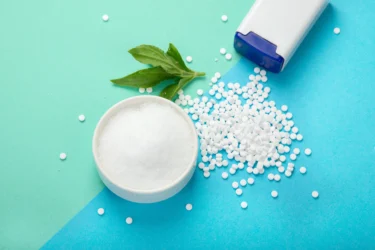
Excessive sugar intake can trigger diarrhoea, as certain sugars draw water into the intestines, worsening symptoms. Artificial sweeteners, particularly sugar alcohols, may also have a laxative and should be avoided during diarrhoea2.

Fatty foods are often difficult to digest and can aggravate diarrhoea symptoms, potentially prolonging discomfort and recovery3.

Spicy foods can irritate the digestive system and worsen diarrhoea4.

Lactose, found in dairy products, can be difficult to digest, especially during diarrhoea5.
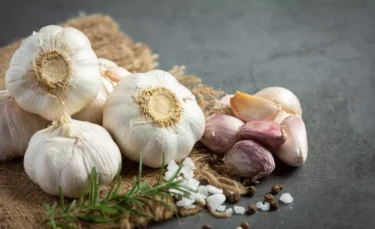
Certain fermentable carbohydrates known as FODMAPs can be hard to digest and may trigger diarrhoea, especially in individuals with chronic digestive conditions such as irritable bowel syndrome (IBS)6.

Alcohol can irritate the digestive tract and worsen diarrhoea4.
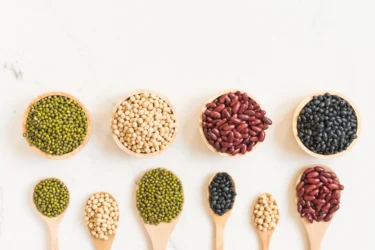
While these foods do not directly cause diarrhoea, the gas can speed up intestinal movement and lead to bloating and cramping, which may worsen symptoms4.
Here are some healthy food options to consider when managing diarrhoea:

If dairy worsens your diarrhoea, consider these alternatives3:

Choose low-fat and baked foods rather than oily or fried items3.
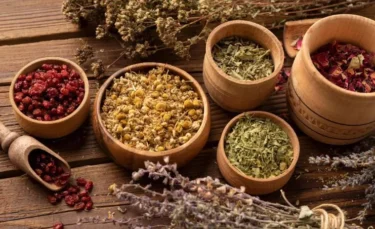
Opt for mild flavours that are less likely to irritate your intestines3.
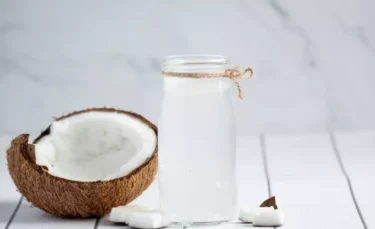
Avoid caffeinated drinks, which can stimulate the digestive tract3.
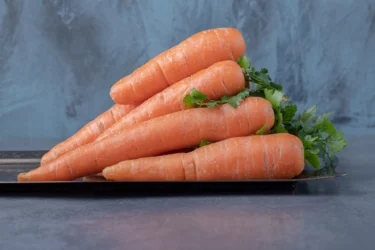
Low-FODMAP foods are less likely to trigger diarrhoea or inflammation4.
Managing diarrhoea effectively involves several key steps. Staying well hydrated is essential, as diarrhoea causes significant fluid and electrolyte loss that can lead to dehydration. While drinking plenty of water helps replace lost fluids, it does not restore vital electrolytes such as sodium and potassium. Oral rehydration solutions (ORS), either commercially prepared or homemade to replenish both fluids and electrolytes1. If vomiting accompanies diarrhoea, antiemetic medications may be helpful, but it is important to consult a healthcare provider before use. Additionally, allowing your body ample rest and relaxation supports recovery and helps the healing process.
It is crucial to monitor your diarrhoea symptoms carefully and avoid self-medication. Seek immediate medical attention or visit the nearest hospital if you experience any of the following8,9:
Signs of severe dehydration:
Preventing diarrhoea or reducing its frequency involves managing underlying health conditions, maintaining good hygiene, and addressing food sensitivities. Key measures include10:
Diarrhoea can result from multiple factors, and certain foods may worsen symptoms. Avoiding foods such as dairy products, high-fat items, sugar alcohols, caffeine, spicy foods, alcohol, and gas-producing foods can support a quicker recovery. Instead, choosing healthier alternatives, monitoring for signs of dehydration, and seeking medical attention when necessary are essential steps. Making informed dietary choices plays a significant role in how swiftly you recover from diarrhoea.
The worst foods for diarrhoea include dairy, high-fat and spicy foods, sugar alcohols, caffeine, alcohol, and gas-producing vegetables.
Foods that may help ease diarrhoea include curd (yoghurt with live cultures), plain white rice, oatmeal, ripe bananas, plain khichdi (a mild rice and lentil dish), baked fish, cooked carrots, and bell peppers. Gentle beverages like herbal teas (such as chamomile or peppermint) and fluids like coconut water can support hydration. For those sensitive to lactose, lactose-free milk or plant-based alternatives may be suitable, though it is best to choose varieties without added sugars or high-FODMAP ingredients7.
Diarrhoea often resolves on its own within two to three days. However, the duration can vary significantly depending on the underlying cause, overall health, and individual response to treatment or dietary changes. If symptoms persist beyond a few days or worsen, medical evaluation is recommended.
Yes, foods that are high in fat, contain sugar substitutes (such as sorbitol or xylitol), or are particularly spicy can trigger diarrhoea even in individuals without specific intolerances. These foods may irritate the digestive tract, increase gut motility, or draw excess water into the intestines, leading to loose stools in some people.
Over-the-counter medicines, such as diarrhoea-reducing agents (e.g. loperamide) and antiemetics, are generally considered safe for short-term use. However, it is important to consult your healthcare provider before taking these medications to ensure they are appropriate for your specific condition and to avoid masking symptoms of a more serious underlying issue.
To help stop diarrhoea, it is important to stay well hydrated by drinking plenty of fluids, including water and oral rehydration solutions. Eating bland, easily digestible foods such as bananas, plain rice, and toast can support recovery. Over-the-counter medications may offer relief, but it’s advisable to consult a doctor before using them. If symptoms persist or worsen, seek medical attention for appropriate diagnosis and personalised treatment.
Consuming spicy food can lead to diarrhoea within a few hours in some individuals. This is often due to capsaicin, a compound found in chilli peppers, which can irritate the digestive tract and speed up bowel movements. However, individual tolerance to spicy foods varies, and not everyone will experience this effect.
Consuming greasy or high-fat foods can potentially lead to diarrhoea, as these meals may overstimulate the digestive system and accelerate bowel movements. This is particularly true for individuals with sensitive digestive systems or underlying gastrointestinal conditions. However, responses vary from person to person, and not everyone will experience diarrhoea after eating greasy foods.
Yes, food poisoning is a common cause of diarrhoea. It occurs when harmful bacteria, viruses, or parasites are ingested through contaminated food or water. These infectious agents can irritate the digestive tract, and diarrhoea is the body’s natural response to help flush them out. Symptoms may also include nausea, vomiting, abdominal cramps, and fever, depending on the type and severity of the infection.
Disclaimer: The information provided here is for educational/awareness purposes only and is not intended to be a substitute for medical treatment by a healthcare professional and should not be relied upon to diagnose or treat any medical condition. The reader should consult a registered medical practitioner to determine the appropriateness of the information and before consuming any medication. PharmEasy does not provide any guarantee or warranty (express or implied) regarding the accuracy, adequacy, completeness, legality, reliability or usefulness of the information; and disclaims any liability arising thereof.
Fluctuations in a woman’s sex drive are natural and often influenced by various physical, emotional, and lifestyle factors. However, a noticeable or persistent decline in sexual desire can sometimes indicate an underlying concern that may benefit from professional attention. Understanding female libido, what affects it, and how to support it is an important part of maintaining overall well-being.
This article aims to provide evidence-based information from a gynaecological perspective to help you better understand the factors that may influence female libido. We will discuss potential causes such as hormonal changes, stress, mental health, medical conditions, and lifestyle habits. Additionally, we will explore general wellness strategies and when it may be appropriate to consult a qualified healthcare provider.
Recognising the underlying reasons for a decrease in sexual desire is an important step towards addressing it effectively. Female libido is influenced by a range of physical, emotional, hormonal, and psychological factors. By understanding what may be contributing to low libido, individuals and healthcare professionals can work together to identify safe, appropriate, and personalised approaches that support overall well-being and quality of life.
Several medical conditions can affect female libido. In such cases, a comprehensive clinical assessment by a qualified healthcare professional is essential.
Stress, anxiety and depression can significantly influence a woman’s interest in sexual activity. These conditions often reduce energy levels, affect mood, and interfere with the ability to feel emotionally connected or relaxed, factors that are important for a healthy libido. In some cases, the medications used to treat these conditions may also impact sexual desire4.
Post childbirth, hormonal changes, and fatigue could lead to a decline in libido. The demands of caring for a newborn, combined with fatigue and sleep deprivation, can also affect libido.
Breastfeeding may play a role by lowering oestrogen levels, which can lead to vaginal dryness and reduced interest in sexual activity. In addition, concerns related to body image, healing after delivery, and adapting to new parenting responsibilities may further influence a woman’s sexual well-being during the post-partum period5.
Certain medications may contribute to a decrease in sexual desire. For example, some antidepressants, particularly selective serotonin reuptake inhibitors (SSRIs), are known to affect libido in some individuals. These medications can influence the brain’s chemical balance, which may in turn impact sexual interest and responsiveness.
Additionally, the use of combined oral contraceptive pills may lower libido in some women. This is thought to be due to a reduction in free testosterone levels, a hormone that plays a role in sexual desire6.
It is important not to stop or adjust any prescribed medication without consulting a qualified healthcare professional. If low libido is suspected to be a side effect of medication, a healthcare provider may be able to recommend alternatives or supportive strategies.
Adopting healthy habits is vital for good sexual health. Unhealthy habits like lack of exercise, a poor diet, excessive alcohol, and smoking can decrease libido7.
Mood disorders and the associated medications, high blood pressure, diabetes or simply changing a medicine that you usually take for medical conditions can cause a change in female sex drive (libido). Talk to your gynaecologist or general physician to find out a cause for change in the libido and find a suitable solution for the same.
Dr. Ashish Bajaj, M.B.B.S., M.D. in Clinical Pharmacology and Toxicology
A decline in sexual desire can be concerning, but it is important to remember that support is available. Several evidence-based approaches can help address the underlying causes of low libido and improve overall sexual well-being. The most suitable treatment will depend on individual circumstances and should ideally be guided by a qualified healthcare professional.
Counselling and education around sexual health can be highly beneficial, especially when no underlying medical condition is present. Speaking with a qualified mental health professional, such as a psychiatrist or psychologist, can help address emotional, psychological, or relational factors contributing to low libido.
Sexual health counselling may involve exploring communication within relationships, managing stress, improving body image, and understanding sexual response. In many cases, these interventions can significantly enhance intimacy and sexual satisfaction.
Hormone therapy may help improve sexual desire in women with confirmed hormonal imbalances. Oestrogen treatment can relieve symptoms such as vaginal dryness, which may support libido. In select cases, testosterone or DHEA therapy may be considered particularly for postmenopausal women diagnosed with hypoactive sexual desire disorder (HSDD). These treatments should only be used under specialist medical supervision8.
Adopting healthy lifestyle habits can positively influence sexual desire. Regular physical activity, a balanced diet, and stress management all contribute to overall well-being and may support libido. Ensuring adequate levels of nutrients such as iron and vitamin B12 is also important, as deficiencies particularly anaemia can lead to fatigue and reduced sexual interest.
When conventional approaches are not effective, some individuals explore complementary options.
L-arginine, DHEA, maca root, ginseng, black cohosh, red clover, chasteberry fruit, and ginkgo are some natural supplements that may help increase libido10. Herbal remedies should be used cautiously and only under medical supervision, many lack FDA approval, and some may interfere with medications or hormone-sensitive conditions.
Positive body image and self-esteem can support sexual well-being. Feeling confident and comfortable with oneself may contribute to improved libido.
Foods like honey and coffee are sometimes linked to increased arousal, though evidence is mostly anecdotal. Such foods may complement a healthy lifestyle but should not be relied upon as primary treatments11. While no solution offers instant results, seeking medical advice is advised for improvement in sexual health.
If low libido is causing distress, affecting the quality of life, or impacting your mental health or relationships, you should consult a doctor.
We cannot improve libido instantly. However, Ginseng, L-arginine, gingko biloba, and maca are a few ingredients that have been studied for their ability to improve female libido and sexual function. Certain practices like yoga and acupuncture may also be beneficial when paired with a healthy lifestyle.
Dr. M.G. Kartheeka, MBBS, MD(Pediatrics)
Each person’s libido varies and so do the factors affecting it. Improving libido requires understanding of both medical and emotional factors. From hormone imbalances to lifestyle habits, multiple contributors may be at play. Begin with healthy habits, open communication with your partner, and timely consultation with your gynaecologist. Tailored treatments, ranging from counselling to hormonal or vaginal therapies can offer safe and sustainable solutions.
DHEA, maca root, ashwagandha, vitamin E with ginseng, and zinc are some. But their effectiveness varies and scientific proof backing their claims is limited. So, it is advised to consult with a healthcare provider before starting any supplement regimen.
Female libido booster foods like truffles, coffee, dark chocolate, bananas and avocados have been linked to increased arousal. But the extent to which these foods can specifically boost libido can vary and is yet to be confirmed scientifically.
FDA has approved a drug called flibanserin (Addyi) and bremelanotide (Vyleesi) for premenopausal women with HSDD. These are not female versions of Viagra and work differently
Women can follow good dietary habits, exercise regularly, sleep enough and manage stress. Having honest communication and focusing on foreplay in a relationship can also help. In case these measures don’t work, consult with a healthcare provider about medical treatments
Yes, female libido can often be restored through a combination of addressing underlying physical or psychological factors, adopting a healthy lifestyle, and exploring appropriate therapeutic interventions. Consulting with a healthcare professional can help identify personalized strategies for restoring and enhancing female libido.
While testosterone plays a role in female sexual function, its impact on libido is complex and varies. Some studies13 suggest that testosterone therapy may enhance female libido in certain cases, but it’s essential to consult with a healthcare professional to assess individual needs and potential risks before considering such interventions.
The effectiveness of hypnosis in enhancing female libido is not firmly established, and its impact varies among individuals. Consultation with a healthcare professional is advised to explore evidence-based approaches and address underlying factors contributing to changes in female libido.
While some studies12 suggest fenugreek may have potential benefits in boosting female libido by influencing hormonal levels, more research is needed to establish its effectiveness. It’s advisable to consult with a healthcare professional before incorporating fenugreek or any supplements into one’s routine.
Various factors can impact female libido, including hormonal changes, stress, relationship issues, medical conditions, and certain medications. Identifying and addressing these underlying factors, with guidance from a healthcare professional, can help improve female libido.
Vitamin D is associated with female libido, as it plays a role in hormone regulation. Ensuring adequate vitamin D levels through sunlight exposure, diet, or supplements may positively influence female sexual health, but individual needs vary.
Disclaimer: The information provided here is for educational/awareness purposes only and is not intended to be a substitute for medical treatment by a healthcare professional and should not be relied upon to diagnose or treat any medical condition. The reader should consult a registered medical practitioner to determine the appropriateness of the information and before consuming any medication. PharmEasy does not provide any guarantee or warranty (express or implied) regarding the accuracy, adequacy, completeness, legality, reliability or usefulness of the information; and disclaims any liability arising thereof.
Beautiful yellow sunflower fields are a delight. It is from such blossoms’ seeds from where sunflower oil is derived. This bright-hued oil is a regular feature in supermarkets. But what goes into making it? Is it truly a health must-have? Or should we worry about its usage?
To answer these questions, let’s dive into an exploration of sunflower oil. We’ll look at its origin, nutritional makeup, pros and cons, and how it fares against other oils.
Did you know ?
Sunflower oils are extracted from the seeds of the Sunflower plant which is scientifically know as Helianthus annuus1. This oil is considered the second most widely oil in healthy diets due to its high nutritional contents2. It contains vitamins, minerals, proteins, flavonoids, amino acids, antioxidants, unsaturated fatty acids and fibers, which contributes to its various health benefits1. This is the only oil which has 46% of oil and 16% proteins, which makes it to rule both the market which has sell oil and proteins separately3.
Originating from North America, sunflowers were used by Indigenous people for thousands of years. Widespread usage of sunflower oil started in the 18th Century, after reaching Russia. They made use of sunflower seeds for food, ornaments, and medicinal purposes4.
To extract sunflower oil from sunflower seeds, it should undergo either cold-press method or refined method.
Did you know sunflower oil comes in different types? Let’s look at those.
Each type of sunflower oil offers unique benefits. High-oleic oil survives high heat, while high-linoleic oil doesn’t do well when heated. Mid-oleic oil offers a bit of both: stability under heat and a good mix of monounsaturated and polyunsaturated fats9.
Here’s a quick comparison of their key traits9:
Let’s delve into what makes sunflower oil a nutrient-dense option10.
From what I’ve seen, I have observed that incorporating sunflower oil into your diet might have positive effects on your lipid profile, specifically by reducing plasma triacylglycerol levels19.
Dr. Siddharth Gupta, BAMS, MD (Ayu.)
Sunflower oil, boasting key nutrients, offers quite a few health benefits.

High-oleic sunflower oil, rich in monounsaturated fats, is linked with heart health. Some studies credit these fats with normalizing cholesterol, blood sugar, and blood pressure, hence lowering the risk of heart disease11. Although further studies are needed to confirm this benefit.

Sunflower oil also helps skin care. It’s rich in vitamins, proteins and fatty acids10. Hence it can act as an antioxidant and anti-inflammatory agent, that may help protect the skin barrier, reduce inflammation, promote wound healing, provide hydration and soften the skin12.

Sunflower oil is rich in Vitamin E, which aids the body’s defense system. It beefs up immunity and may help protect against infections, yet more research should be done13.
Based on my experience, I have seen that including sunflower oil in your diet may help protect your stomach from the side effects of certain medications. This is likely because sunflower oil can enhance your body’s natural anti-inflammatory response, which can reduce inflammation in the stomach19.
Dr. Rajeev Singh, BAMS
But beware, sunflower oil also has potential pitfalls. Specifically, the high-linoleic variant carries some risks.
Sunflower oil has several rivals on supermarket shelves. How does it compare?
Olive oil tops the health chart among cooking oils. Compared to sunflower oil, it stands up better to heating. It also boasts heart-health by lowering the bad cholesterol and increasing the good cholesterol16.
Canola is also considered as a healthy oil but it has a chemical substance called hexane which is added while extracting the oil, which affects the oil’s stability by removing omega 3 and producing the trans-fat. Even this oil cannot withstand over heating like sunflower oil. But in the market cold-pressed oil or virgin canola oil are available, which are very expensive17. Hence both the oils have same effects only and we need to know how to use them to gain better health benefits.
Coconut oil, despite its saturated fat content, doesn’t harm your heart if eaten sparingly and as part of a varied diet. However, there are few studies showing that it causes harm to heart health17.
American Heart Associates recommends following cooking oils to be included in diet for better heart health18:
However, there are a few measures that need to be taken while consuming them18.
Sunflower oil is a mixed bag. On one hand, it’s rich in nutrients and good fats. On the other hand, certain types (like the high-linoleic version) have potential downsides. The secret lies in knowing which type of sunflower oil you’re dealing with. High-oleic sunflower oil is a healthier choice, offering heart-helping monounsaturated fats. But traditional high-linoleic sunflower oil, rich in omega-6 fats and with less heat stability, isn’t its equal. So, choose wisely! Remember, mixing oils in your kitchen can diversify your diet’s nutrition and health benefit profile.
It depends on the sunflower oil type. High-oleic sunflower oil, rich in monounsaturated fats and stable under heat, is a healthier pick. But traditional high-linoleic sunflower oil, though filled with essential fats, is not as heat-resistant.
When compared to high-oleic sunflower oil, olive oil provides similar heart-healthy monounsaturated fats. But, olive oil, especially the extra-virgin kind, also offers a wide range of beneficial plant compounds and nutrients. This makes it an overall healthier choice.
High-linoleic sunflower oil is high in omega-6 fats. Too much of these can trigger inflammation, which can be a springboard for many health problems. Therefore, it is always recommended to consume in moderation.
Sunflower oil can be a healthy choice when used in moderation. It’s rich in unsaturated fats, particularly omega-6 fatty acids, which can benefit heart health when consumed as part of a balanced diet. However, it’s important to choose high-quality, cold-pressed oils and avoid excessive consumption due to their high-calorie content.
Sunflower oil can help improve cholesterol levels by increasing HDL (good) cholesterol and reducing LDL (bad) cholesterol when used as part of a balanced diet. Moderation and choosing healthier cooking methods, like baking or sautéing, are key to maximizing its benefits.
Sunflower oil is beneficial for hair health due to its high content of vitamin E, essential fatty acids, and antioxidants. It helps nourish the scalp, strengthen hair strands, and protect against damage from environmental stressors. Applying sunflower oil to hair and scalp regularly can promote shine and overall hair health. Although more research is needed to prove this benefit.
Sunflower oil is not directly related to weight loss but when used in moderation as part of a balanced diet, it can support weight loss due to its healthy fat content. Moreover, adopting a healthy lifestyle such as avoiding processed food high in calories can help maintain or reduce the weight.
Sunflower oil is primarily composed of unsaturated fats, with very low levels of saturated fat. It is considered a healthier cooking oil option due to its high content of monounsaturated and polyunsaturated fats, which can help lower cholesterol levels when used in place of saturated fats.
Sunflower oil provides essential fatty acids, such as omega-6 and omega-9, which support cell structure and overall body function. It can help maintain healthy cholesterol levels, promote heart health, and contribute to skin and hair health when used in moderation as part of a balanced diet.
Disclaimer: The information provided here is for educational/awareness purposes only and is not intended to be a substitute for medical treatment by a healthcare professional and should not be relied upon to diagnose or treat any medical condition. The reader should consult a registered medical practitioner to determine the appropriateness of the information and before consuming any medication. PharmEasy does not provide any guarantee or warranty (express or implied) regarding the accuracy, adequacy, completeness, legality, reliability or usefulness of the information; and disclaims any liability arising thereof.
Links and product recommendations in the information provided here are advertisements of third-party products available on the website. PharmEasy does not make any representation on the accuracy or suitability of such products/services. Advertisements do not influence the editorial decisions or content. The information in this blog is subject to change without notice. The authors and administrators reserve the right to modify, add, or remove content without notification. It is your responsibility to review this disclaimer regularly for any changes.
Are you aware of the buzz about oat milk and almond milk? These plant-based milk options have become very popular recently, especially for those who want to avoid dairy. This blog discusses in detail about these newer milk options. We’ll explore their nutritional facts, weigh their good and bad sides, evaluate their green credentials and safety concerns.
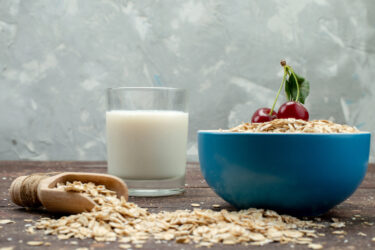
Oat milk is a non-dairy option made by blending soaked oats with water and filtering out the pulp. The result is a delicious, creamy drink that’s taken the plant milk world by storm.
Making oat milk is simple. You start by grinding whole oats, stirring them into water, and heating the mix. This process splits the oat starches. The liquid is separated from the oat mush and filtered. The end result is a thick creamy milk packed with fibres, especially beta-glucans.
Unlike some plant milks, oat milk boasts a smooth, buttery texture. It’s almost as rich as full-fat dairy milk. As for taste, oat milk is naturally sweet with a subtle oaty aftertaste. That’s why it is so popular in creamy dishes.

Now let’s check out almond milk. This non-dairy favourite has origins dating back to medieval times. It’s made mostly from almonds and water. Its mild texture and slightly nutty flavour have earned it many fans.
How do we make almond milk? First, we soak almonds in water overnight. Next, we drain the almonds and blend them with more water. Finally, we strain the mixture to remove the solids. What remains is a silky, pale milky-white liquid.
Almond milk has a light, thin consistency with a hint of nuttiness. Unsweetened versions are less calorie-dense. That’s why it’s popular among diet watchers and health buffs.
Though oat milk and almond milk are top-notch non-dairy options, their nutritional profiles can be quite different. These differences matter when picking one over the other.
Based on what I have observed, almond and oat milk are popular choices for non-dairy alternatives in India. These plant-based milk alternatives are often chosen by individuals who are lactose intolerant, have dairy allergies, or follow a vegan diet. The consumption of almond milk in India was found to be about 54% as compared to oat milk, which was about 29%9.
Dr. Siddharth Gupta, B.A.M.S, M.D (Ayu)
Apart from being lactose-free and vegan, oat milk and almond milk offer unique health perks tied to their ingredients. However, there are some drawbacks of both.
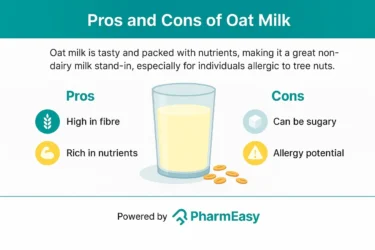
Oat milk is tasty and packed with nutrients, making it a great non-dairy milk stand-in, especially for individuals allergic to tree nuts.
From what I have observed, a 240ml serving of oat milk contains approximately 130 calories, 24g of carbohydrates, 4g of proteins, and 2.5g of fats. Oat milk can be a suitable option for those looking for a plant-based alternative to dairy milk, providing essential nutrients in a convenient form9.
Dr. Rajeev Singh, BAMS
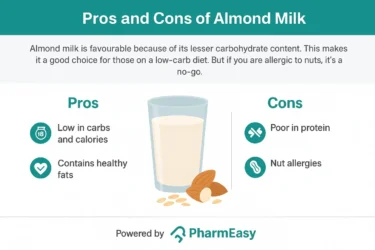
Almond milk is favourable because of its lesser carbohydrate content. This makes it a good choice for those on a low-carb diet. But if you are allergic to nuts, it’s a no-go.
Almond and oat milk offer different levels of nutrient richness. Almond milk has fewer calories, but it also provides less protein, carbs, and fibre. On the other hand, oat milk has more calories, but it also provides more of these vital nutrients.
Oat milk generally contains more added B vitamins than almond milk, and almond milk contains more vitamin E.7 However, both fortified almond and oat milks have the necessary vitamins and minerals like vitamin D and calcium. But remember, not all fortified brands are equal. Some may include thickening agents, artificial flavours, and excessive salt. So beware when you buy.
Oat milk has about 120 calories per cup, which is almost three times the calories in almond milk. Almond milk has just 37 calories per cup. For those counting calories, almond milk might be a better option1,2.
Oat milk has higher protein that is about 3 grams per cup. Almond milk trails with 1.5 grams per cup1,2. But cow’s milk has much higher protein that both, that is about 8 grams of protein per cup.8 In terms of carbs, oat milk is the clear winner with 16 grams per cup. Almond milk has just one gram per cup. As for fat, almond milk has more than oat milk1,2.
Based on what I have read, a 240ml serving of almond milk typically contains around 59 calories, 6g of carbohydrates, 1g of protein, and 4g of fats. These nutritional values make almond milk a viable option for individuals who are lactose intolerant or follow a plant-based diet9.
Dr. Smita Barode, B.A.M.S, M.S.
Both oat milk and almond milk leave a mark on the environment. Here we’ll explore water use, carbon emissions, and energy use in making these milks.
Think about allergies, additives, and sugar when thinking about safety.
Some people are allergic to almonds, so there’s a risk with almond milk. Oat milk could indirectly trigger allergies. This happens through possible gluten contamination. Those allergic to gluten need to be careful here and opt for gluten-free options.
Many varieties of oats and almond milk use things like gums to tweak their consistency and shelf life. Usually, these are safe. However, studies suggest that eating too much might mess up your digestion. Some almond milk brands use carrageenan, which has links to digestive troubles and gut inflammation.
Sugar content in these milks can vary a lot across brands. Unflavoured, unsweetened types have very little sugar, but flavoured types can be high in sugar. Always read the nutrition label to avoid extra added sugars.
Choosing between oat milk and almond milk rests mainly on personal taste, dietary needs, and green concerns.
If you’re trying to lose weight or if you’re diabetic, almond milk might be a good choice due to its low calorie and carb content. But if you’re looking to manage cholesterol or want a filling drink, oat milk wins due to its high fibre content.
Whether you prefer the creaminess of oat milk or the nuttier taste of almond milk guides your everyday choice.
If you’re looking for an eco-friendly option, oat milk wins hands down. It uses less water, land, and emits less CO2 during production.
In this blog post, we’ve dug deep into oat milk and almond milk. Both have a rightful place in the dairy-free movement. Both have their strengths. Almond milk wins with fewer calories, oat milk scores with higher fibre. One thing to note is that neither oat milk nor almond milk reach the protein content of cow’s milk. But you can get calcium, vitamin D, and vitamin B12 from fortified oat and almond milk versions.We didn’t intend to pit one milk against the other. Rather, we’ve tried to give you a clear picture of the pros and cons of each. Remember, the ultimate goal isn’t to find the ‘best’ milk, but to find the milk that’s ‘best for you’.
It depends. If you’re aiming to lose weight or are diabetic, almond milk with its lower sugar and calorie content might be right for you. On the other hand , oat milk is high in fibre and nutrients, which boosts heart health and immunity, and helps muscle grow. Consult a health professional for tailored advice.
Different types of milk suit different people. Each has its unique set of nutrients and caters to different diet needs or restrictions. Oat milk is as creamy as cow’s milk, but it provides less protein and more sugar. Cow’s milk offers protein and calcium but might trigger allergies. The ‘healthiest’ milk is the one that matches your particular health goals.
Both are suitable. Both oat milk and almond milk do not contain lactose. So, both are safe for individuals who are lactose intolerant or choose to avoid dairy.
Oat milk and almond milk both have low calorie options, but almond milk generally has fewer calories, making it a better choice for weight loss. However, the best option depends on individual nutritional needs and preferences.
Almond milk is better for managing cholesterol as it contains no cholesterol and is low in saturated fat. Oat milk, while slightly higher in calories, also helps lower cholesterol due to its beta-glucan fibre content.
Almond milk is generally better for diabetics because it has a lower carbohydrate content and glycaemic index compared to oat milk. However, unsweetened varieties of both can be suitable depending on individual dietary needs.
Almond milk tends to blend well with coffee without overpowering its flavour, while oat milk offers a creamier texture and natural sweetness that some prefer. The best choice depends on personal taste preferences and desired coffee experience.
Disclaimer: The information provided here is for educational/awareness purposes only and is not intended to be a substitute for medical treatment by a healthcare professional and should not be relied upon to diagnose or treat any medical condition. The reader should consult a registered medical practitioner to determine the appropriateness of the information and before consuming any medication. PharmEasy does not provide any guarantee or warranty (express or implied) regarding the accuracy, adequacy, completeness, legality, reliability or usefulness of the information; and disclaims any liability arising thereof.
Links and product recommendations in the information provided here are advertisements of third-party products available on the website. PharmEasy does not make any representation on the accuracy or suitability of such products/services. Advertisements do not influence the editorial decisions or content. The information in this blog is subject to change without notice. The authors and administrators reserve the right to modify, add, or remove content without notification. It is your responsibility to review this disclaimer regularly for any changes.
Palm oil is a widely used ingredient found in many everyday products, from food items to household goods. Despite its prevalence, there is often limited awareness about what palm oil is and how it is used.
Derived from the fruit of the oil palm tree, palm oil has become a common component in both edible and non-edible products due to its versatility, long shelf life, and cost-effectiveness. It is used in cooking oils, baked goods, snacks, margarine, cosmetics, soaps, and even cleaning products1.
This article explores the origins of palm oil, its various applications, and its nutritional profile. It also considers the ongoing discussions surrounding its impact on health and the environment. Comparisons with other types of oils will be included to help provide a balanced perspective.
Palm oil is an edible vegetable oil extracted from the fruit of the oil palm tree (Elaeis guineensis). Originally cultivated in the western and southwestern regions of Africa, the oil palm is now grown extensively across tropical regions, particularly in Southeast Asia. Due to its unique fat composition, palm oil has become a key ingredient in a wide variety of products worldwide1.
Palm oil production begins with the harvesting of oil palm fruits. The fruits are then steamed or boiled and mechanically pressed to extract the oil. It’s important to differentiate between palm oil and palm kernel oil, though both are derived from the Elaeis guineensis plant, palm oil comes from the fruit’s fleshy pulp, while palm kernel oil is obtained from the seed inside the fruit. Each oil has a distinct composition and is used in different culinary and industrial applications2.
Crude palm oil has a has a distinctive reddish-orange colour, primarily due to its natural carotene content, which is the same pigments that give carrots and tomatoes their vibrant hues. It also contains tocotrienols, a form of vitamin E. These naturally occurring compounds contribute to the oil’s oxidative stability and are part of its overall nutritional profile2.
Palm oil is available in various forms depending on the degree of processing. The two most common types found in consumer products are unrefined and refined palm oil3.
Palm oil has been the subject of considerable attention in discussions surrounding diet and health, largely due to its relatively high saturated fat content. Saturated fats, when consumed in excess, may influence cholesterol levels, which in turn can have implications for heart health. However, palm oil also contains a number of beneficial nutrients, including certain forms of vitamin E and essential fatty acids, which play important roles in supporting overall health.
It is important to consider the type and processing level of palm oil, as these factors can affect its nutritional properties and best use. Below is an overview of commonly available forms of palm oil, their characteristics, and typical applications:
Ever wondered the many ways palm oil is used in our daily life? Let’s take a look.
Palm oil is a common cooking ingredient thanks to its unique taste and adaptability. It’s particularly good for frying because it can withstand high heat.
Palm oil isn’t limited to the kitchen. It is a key ingredient in a variety of everyday non-food items.
Refined and fractionated palm oil is widely utilised in the food industry due to its distinct functional properties. It demonstrates excellent oxidative stability, which allows it to resist spoilage and maintain quality during storage and processing. Furthermore, palm oil contributes nutritional value by supplying essential nutrients that support bodily functions11.
Dr. Siddharth Gupta, B.A.M.S, M.D (Ayu)
Palm oil is a versatile ingredient that plays a significant role in both food and non-food products. Its functional properties and stability have led to widespread use in households and industries around the world.
Unrefined palm oil is a natural source of carotenoids, which the body can convert into vitamin A. This makes it a potentially useful addition to diets where vitamin A deficiency is a concern. Additionally, palm oil contains tocotrienols, a form of vitamin E that has been studied for its antioxidant properties and potential roles in supporting heart and brain function1.
While research into these effects is ongoing, these nutrients are recognised for their contribution to overall health.
Approximately 50% of palm oil’s fat content consists of saturated fats, particularly palmitic acid2. Diets high in saturated fat have been associated with increased levels of low-density lipoprotein (LDL) cholesterol, often referred to as ‘bad’ cholesterol which may raise the risk of cardiovascular disease.
Palm oil, like all oils, is energy-dense and high in calories. Therefore, portion control and overall dietary balance are essential when including it in regular meals.
The nutritional composition per tablespoon of palm oil is as follows4:
While palm oil is often discussed in the context of its saturated fat content, emerging research suggests it may offer certain potential benefits when consumed in moderation as part of a balanced diet. These areas of interest primarily relate to heart and brain health, though further research is necessary to draw firm conclusions.
Some scientific studies have explored the impact of palm oil on heart health, with mixed but noteworthy findings.
Evidence and Research Studies
Considerations
It’s important to emphasise that such findings are associated with moderate consumption within the context of an overall healthy diet. Palm oil is calorie-dense and high in fat, and excessive intake, like that of any fat, may contribute to weight gain and related health issues. Individual dietary needs, existing medical conditions, and overall lifestyle should be considered when evaluating its suitability7.
Research has indicated potential brain health benefits associated with the vitamin E tocotrienols found in palm oil.
Evidence and Research Studies
Studies8 have suggested that tocotrienols in palm oil can help protect the brain against neurodegenerative diseases. These compounds have been linked to a possible slowing of dementia progression and a reduction in the risk of stroke or the development of brain lesions.
Tocotrienols function as antioxidants, which may protect the brain’s delicate polyunsaturated fats from oxidative damage. This protective effect could contribute to slowing the advancement of dementia, lowering stroke risk, and preventing the growth of brain lesions. It is important to note, however, that larger-scale human trials are required to substantiate these preliminary findings.
While palm oil may offer certain health benefits, it has also attracted considerable debate regarding its potential negative effects on both human health and the environment. Understanding these issues is crucial to forming a balanced perspective on palm oil production and consumption.
Much of the health-related discussion around palm oil focuses on its saturated fat content and the possible implications for cardiovascular health.
There is ongoing scientific debate about the relationship between saturated fat intake, blood cholesterol levels, and heart disease risk. Some studies suggest that palm oil does not adversely affect heart health and may even provide certain benefits when consumed in moderation. Conversely, other research indicates that its relatively high saturated fat content could increase levels of low-density lipoprotein (LDL), often referred to as ‘bad’ cholesterol, which is linked to a higher risk of cardiovascular disease2.
The predominant saturated fat in palm oil, palmitic acid, is considered to have a milder effect on blood cholesterol compared to some other saturated fats. Nonetheless, concerns persist that excessive consumption of palm oil could contribute to elevated cholesterol levels and associated health risks2.
The environmental impact of palm oil production is a significant aspect of the wider discussion.
Large-scale palm oil cultivation, particularly in regions such as Southeast Asia, has been associated with substantial deforestation and the destruction of natural habitats. This expansion threatens the survival of endangered species, including the Bornean orangutan and the Sumatran tiger, among others9.
Beyond environmental damage, the industry has faced criticism for labour exploitation and violations of indigenous peoples’ rights, especially in areas where regulatory oversight is limited.
Cheese replacements or imitation products are often preferred for their cost-effectiveness and nutritional profile. When selecting such alternatives, palm oil has demonstrated potential benefits, including a favourable effect on blood cholesterol levels when used instead of milk fat. This is largely attributed to its content of monounsaturated and polyunsaturated fatty acids. Additionally, the natural tocopherol present in palm oil contributes to the nutritional value of cheese analogues. Thus, incorporating palm oil as a source of dietary fat may be a suitable option11.
Dr. Rajeev Singh, BAMS
Understanding how palm oil compares to other popular oils can provide valuable insight into its role in a balanced diet.
Olive oil is widely recognised for its cardiovascular benefits, primarily because of its high content of monounsaturated fats. Some studies have suggested that palm oil and olive oil may have similar effects on cholesterol levels, despite palm oil’s higher saturated fat content10.
Canola oil contains less saturated fat and more monounsaturated fat than palm oil. It also has a notable proportion of omega-3 fatty acids, which contribute to its reputation as a heart-friendly oil. However, most commercially available canola oil is derived from genetically modified crops, whereas palm oil typically is not10.
Avocado oil is rich in monounsaturated fats and antioxidants, making it one of the healthiest cooking oils available. Similar to palm oil, avocado oil is stable at high temperatures, making both oils suitable for frying and other heat-intensive cooking methods10.
Sunflower oil is known for its high polyunsaturated fat content, especially linoleic acid, which is valued for its potential to lower cholesterol. While its nutritional profile differs from that of palm oil, sunflower oil remains a popular choice for those seeking to manage cholesterol levels10.
Coconut oil, like palm oil, contains a high proportion of saturated fats, particularly lauric acid. Its saturated fat content is generally higher than that of palm oil. Despite this, coconut oil is frequently recommended for its various health effects, although evidence remains mixed and further research is ongoing10.
Also Read: Punarnava: Uses, Benefits, Side Effects & More
Assessing palm oil as either beneficial or harmful is a complex issue that depends largely on consumption patterns, including quantity, frequency, and the context of an individual’s overall diet. While palm oil’s high saturated fat content suggests moderation is necessary, it also provides valuable nutrients such as vitamins A and E, which offers practical benefits in cooking due to its heat stability.
However, the environmental challenges associated with palm oil production are significant and must be taken into account. Therefore, if palm oil is to be included in the diet, it should be consumed judiciously, within a balanced and varied nutritional framework. Choosing palm oil that is sustainably sourced can further help reduce its environmental impact, supporting both personal health and ecological responsibility.
Also Read: How Castor Oil Benefits You And How Much You Need?
The main concern associated with palm oil is its high saturated fat content, which may increase bad cholesterol and heart disease risk. But eating in moderation as part of a balanced diet should not pose major health risks.
Palm oil and olive oil each offer distinct nutritional properties. Olive oil is a source of monounsaturated fats, while palm oil contains natural antioxidants, including vitamin A (as beta-carotene) and vitamin E (tocotrienols and tocopherols). The choice between the two may depend on individual dietary preferences, culinary use, and nutritional considerations.
As with any food, moderation is key. Palm oil contains saturated fats, and the World Health Organization recommends that saturated fat intake should not exceed 10% of total daily calories. When used in small amounts, palm oil can be part of a balanced and varied diet, depending on individual nutritional needs.
There is no conclusive evidence directly linking palm oil consumption to cancer. However, concerns arise from its potential role in a diet high in saturated fats, which may contribute to certain health risks and research on this topic is ongoing.
While palm oil consumption has been associated with elevated levels of LDL cholesterol due to its saturated fat content, the direct link to heart disease remains inconclusive. Moderation in consumption and maintaining a balanced diet are recommended for heart health.
When stored properly in a cool, dark place and sealed tightly, palm oil can have a shelf life of up to a year or more. However, factors such as exposure to heat, light, and air can affect its quality and lead to a shorter storage lifespan.
While rare, some individuals may be allergic to palm oil, experiencing allergic reactions such as skin rashes or gastrointestinal discomfort. However, palm oil allergies are not widespread, and most people can consume it without adverse effects.
Introducing palm oil to babies’ diets is generally not recommended due to its high saturated fat content. Babies need a balanced diet that primarily consists of breast milk or formula, followed by the gradual introduction of age-appropriate solid foods.
Palm oil and palmolein oil are not the same, although both are derived from the palm fruit. Palm oil is in a semi-solid form, while palmolein in the liquid fraction is obtained through a refining process. They have different applications in cooking and food processing.
There is no conclusive evidence that red palm oil directly darkens the skin. While some anecdotal claims suggest potential skin benefits, the impact on skin tone is not well-established, and individual reactions may vary. It’s advisable to consult with a dermatologist for personalised skincare advice.
Disclaimer: The information provided here is for educational/awareness purposes only and is not intended to be a substitute for medical treatment by a healthcare professional and should not be relied upon to diagnose or treat any medical condition. The reader should consult a registered medical practitioner to determine the appropriateness of the information and before consuming any medication. PharmEasy does not provide any guarantee or warranty (express or implied) regarding the accuracy, adequacy, completeness, legality, reliability or usefulness of the information; and disclaims any liability arising thereof.
Most women of reproductive age menstruate unless they are pregnant, breastfeeding, or have underlying medical conditions. On average, a normal menstrual cycle lasts about 28 days (with a variation of roughly 7 days more or less), though it can range from 21 to 35 days in adults and 21 to 45 days in young teens1.
You might wonder whether there are ways that may help your period start sooner. Before we get into that, let’s first understand what a normal menstrual cycle looks like and how it differs from an irregular one. We’ll also explore common reasons why periods may be delayed.
Next, we’ll discuss safe ways to manage delayed periods, including lifestyle adjustments, natural approaches, and medical options, while highlighting what is safe and what should be avoided. Then we’ll check the risks and safety tips to keep in mind. Ready? We will also answer some common questions about periods in the end!
Friendly Reminder: The information shared here is for educational purposes only and the reader should consult a registered medical practitioner before implementing any changes to their health routine.
First, let’s get the basics right. Knowing what a healthy menstrual cycle is and what causes delays is important.
The menstrual cycle prepares your body for pregnancy and is influenced by certain reproductive hormones. These hormones thicken the inner lining of the uterus, preparing it for implantation of a fertilised egg. If an egg is not fertilised during this cycle, hormone levels drop. This starts a “period” as the lining sheds1.
There are several reasons why your period may be delayed, including the following2:
Lifestyle or food changes may be made should you wish to get your periods faster for just one cycle. However, if your “how to get periods immediately or faster” is a more recurring query, you need medical guidance as frequently delayed periods might need some medical intervention.
Dr Ashish Bajaj, M.B.B.S., M.D. in Clinical Pharmacology and Toxicology
Still searching for how to make your period start sooner over the internet? If your periods are late and you’re not pregnant or suffering from a medical condition, there are some approaches that may help your periods start sooner.
Many people use natural remedies and supplements to get their period started. It is important to remember that these traditional approaches lack strong scientific support and may work differently for different people.
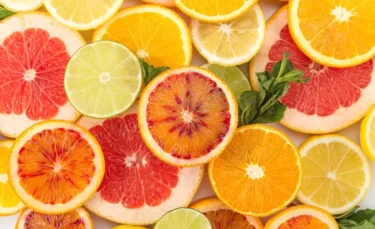
Although it is said that vitamin C supplementation can possibly start periods, there is no scientific data to support this claim3. In fact, this is not a recommended method as high vitamin C doses may lead to kidney stones4.
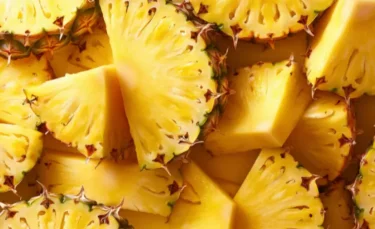
Bromelain, an enzyme in pineapple, may affect menstrual hormones5.
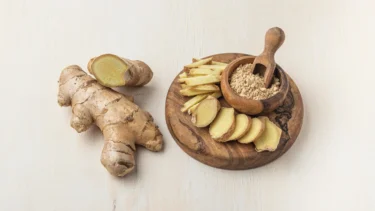
Traditional wisdom believes that ginger can start menstruation by causing uterine contractions, even though there’s no solid proof of this6.
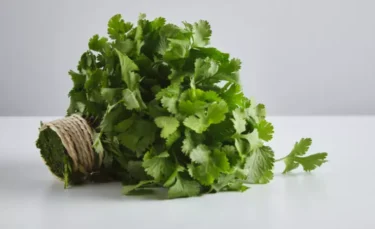
Parsley helps with balancing hormones in women and enhances oestrogen secretion7. Thus, it may help in getting the period sooner.
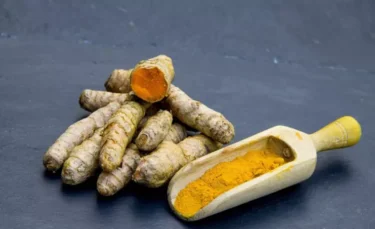
Some people believe turmeric can affect hormone levels and help induce periods, but there’s no scientific proof of this8.
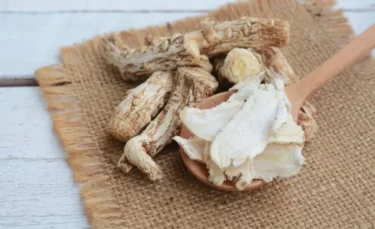
These herbs may increase blood flow to the uterus or help shed the uterine lining, which may lead to periods9.
Caution: Periods cannot be reliably induced or hastened by foods, herbs, or home remedies. Traditional remedies, although believed to influence menstruation, are not proven to be effective and may carry health risks. These methods should be considered traditional beliefs, not evidence-based solutions. Therefore, always consult a gynaecologist before trying to manage or alter your menstrual cycle.
Ideally, one must not disturb body’s natural cycles. If your periods make your daily routine tasks difficult to carry out, consult a gynaecologist for evaluation.
Dr. Arpit Verma, MBBS, MD (Pharmacology)
Changing your lifestyle and being active might help start periods. However, remember, the effectiveness of these methods may vary from person to person.
High doses of vitamin C may induce menses by increasing the levels of oestrogen in the body. Increased levels of this hormone stimulate uterine contractions, which in turn, stimulates bleeding.
Dr. M.G. Kartheeka, MBBS, MD(Pediatrics)
While lifestyle changes may help some individuals, hormonal treatments provided by a healthcare professional are the most reliable way to regulate periods. Always consult your gynaecologist before starting any treatment.
Important caution: Hormonal contraceptives are intended for cycle regulation, not for immediately inducing a period. Any changes to dosage, timing, or method should only be done under a doctor’s supervision.
Any attempt to alter normal body function carries risks, and trying to induce a period is no different.
Never attempt to induce your period if there is any possibility of pregnancy, as this can lead to serious complications. Always consult a healthcare provider/doctor before trying any method to manage or regulate your cycle.
While attempting to induce periods can be beneficial sometimes, it has its own set of risks. You might face hormonal imbalances, disturbed period patterns, or side effects from medicines.
It’s important not to try and start your period if there’s a chance you might be pregnant. Substances that induce menstruation can also cause miscarriages.
Repeated irregular cycles may signal underlying health conditions such as PCOS, thyroid disorders, or premature ovarian insufficiency. Therefore, such cases require proper evaluation and workup by a doctor before attempting any intervention.
Get professional help if your period is consistently irregular, you miss three periods in a row, your periods stop before the age of 45, or you bleed between periods or after sex, or postmenopausal bleeding is noted.
Also Read: How To Know If You’re Pregnant?
We’ve covered what affects menstrual cycles, safe ways to manage delays, and the role of both natural and medical approaches. Remember, your body is unique, and variations in periods are normal. However, if your cycles are irregular or you miss three or more periods, consult a gynaecologist to rule out conditions like PCOS, thyroid disorders, or premature ovarian insufficiency. Avoid unproven or unsafe remedies, and rely on a healthcare provider for guidance on period-related concerns.
Also Read: Why is My Period Blood Black? Understanding the Underlying Health Facts
You could feel bloated or moody or have headaches, back pain, tender breasts, and cravings before your period arrives.
The substances used to induce periods can lead to a miscarriage. If you suspect you may be pregnant, do not attempt to induce your period. Instead, speak to a healthcare provider.
It’s important to note that attempting to induce your period artificially can have health risks. Menstrual cycles vary, and it’s best to let them occur naturally. If you have concerns about menstrual cycle irregularities, consult a healthcare professional for personalised advice.
While the chances are low, it is still possible to get pregnant during your period, especially if you have a shorter menstrual cycle. It’s crucial to use contraception consistently if you want to avoid pregnancy, as fertility varies among individuals.
Yes, a menstrual period may be delayed by 10 days due to various factors such as stress, hormonal changes, or underlying health conditions. If concerns persist, it is advisable to consult a healthcare professional for personalised guidance. Your period can be late due to stress.
No, a typical menstrual period does not occur during pregnancy. However, some pregnant individuals may experience light bleeding or spotting, often mistaken for a period. If there’s any uncertainty or concern, it’s essential to seek advice from a healthcare professional.
Yes, occasional period delays are normal and may be influenced by factors such as stress, hormonal fluctuations, or lifestyle changes. However, persistent or significant delays may warrant consultation with a healthcare professional to rule out underlying issues.
It is not possible to induce your period overnight. Menstrual cycles are natural processes influenced by hormonal changes. It’s crucial to maintain a healthy lifestyle, including regular exercise, balanced nutrition, and adequate sleep, for overall reproductive health. If you have concerns about your menstrual cycle, consult a healthcare professional for personalised advice.
Disclaimer: The information provided here is for educational/awareness purposes only and is not intended to be a substitute for medical treatment by a healthcare professional and should not be relied upon to diagnose or treat any medical condition. The reader should consult a registered medical practitioner to determine the appropriateness of the information and before consuming any medication. PharmEasy does not provide any guarantee or warranty (express or implied) regarding the accuracy, adequacy, completeness, legality, reliability or usefulness of the information; and disclaims any liability arising thereof.
Links and product recommendations in the information provided here are advertisements of third-party products available on the website. PharmEasy does not make any representation on the accuracy or suitability of such products/services. Advertisements do not influence the editorial decisions or content. The information in this blog is subject to change without notice. The authors and administrators reserve the right to modify, add, or remove content without notification. It is your responsibility to review this disclaimer regularly for any changes.
Living in a stressful world is a fact of life. Work, personal issues and daily challenges can upset our body’s cortisol balance. Cortisol, also known as the ‘stress hormone,’ is key to this process. But what is the best way to keep cortisol levels in check? Let’s explore.
This guide will give you a fresh look at cortisol and offer ways to keep it balanced. Plus, it will answer common questions about cortisol.
Did you know?
Cortisol is a steroid hormone made by our adrenal glands. Usually labelled as the “stress hormone”, it has more to it. Let’s explore its role and the impact of its ups and downs on us.
Cortisol works as follows1:
Balance is the key here. Both high and low cortisol levels can cause problems2.
Patients commonly presenting with frequent headaches, unexpected weight gain, irritability, and hypertension may be diagnosed to have increased cortisol levels. Having a correct cortisol balance is essential for your health, and producing too much or too little cortisol can cause health problems.
Dr. Ashish Bajaj, M.B.B.S., M.D. in Clinical Pharmacology and Toxicology
What disrupts the cortisol balance? Cortisol levels can get out of sync for several reasons. Common disruptors include:
High cortisol3 may lead to
As mentioned, cortisol has a hand in many vital functions of the body4,5. So if its levels go haywire, our health could take a hit, ranging from minor to severe issues.
L-theanine is an amino acid found in black tea, green tea, and some brands of dark chocolate. Research suggests it produces a state of calmness for up to three hours by reducing cortisol levels and blunting cortisol responses.
Dr. M.G. Kartheeka, MBBS, MD(Pediatrics)
Now that we know why it’s essential to keep cortisol levels in check, let’s look at ways to manage and regulate them better.

Stress and cortisol are linked. A consistent daily routine of stress-management is key to regulating cortisol, as controlling stress directly influences your body’s hormone levels.

As much as activity matters, so do periods of rest. These ‘rest’ sessions allow your body to relax and cut back on cortisol release.
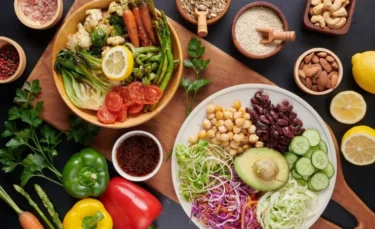
“We are what we eat.” This phrase holds true for cortisol, too. The foods you consume can either contribute to a rise in cortisol or help regulate it6,7.
Although initial studies have shown that these food items may be helpful, further large-scale human trials are needed to prove this. It is best to consume them in moderation.
Following a healthy diet and lifestyle is beneficial. But cases of high cortisol levels in lab reports must be evaluated and treated by an endocrinologist. Very high cortisol levels will not respond merely by diet and lifestyle changes.
Dr. Arpit Verma, MBBS, MD (Pharmacology)

Caffeine might perk you up, but it’s a cortisol buster. Drinks with caffeine like coffee can kick up cortisol, leading to a brief spike in its levels. Try cutting back on caffeine, especially before bedtime, to avoid throwing off the sleep pattern4.

There’s nothing like a good night’s sleep to revitalize body and mind. Good, consistent sleep lets cortisol levels reset, leaving you fresh for the next day6. Create a calming pre-sleep routine, try to wake and sleep at the same time each day, and make sure your resting space invites sleep.

Physical activity lifts your mood naturally. Regular exercises at moderate intensity can reduce cortisol and up the levels of endorphins, nature’s happy hormones6,8.

Good times with loved ones and social activities are key to warding off stress. Strong bonds and positive social events breed joy and provide necessary emotional support, all of which help manage stress and, in turn, cortisol levels6,8.
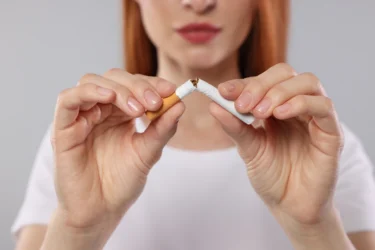
Dealing with cortisol requires a full-picture approach rather than piecemeal solutions. Choosing a lifestyle that includes more calming activities could bring bigger rewards.
Dealing with life’s stresses can be challenging and affect our health. Understanding cortisol’s impact on health, and how to manage it can seem intimidating, but it’s achievable. It’s essential to recognize that cortisol itself is not the problem; the imbalance is. Stress management, a balanced diet, sufficient sleep, exercise, and nurturing relationships are essential for managing cortisol levels. Additionally, simple lifestyle adjustments and the use of scientifically-supported supplements can help maintain a healthy cortisol balance.
Several factors can cause abnormal cortisol levels. Chronic stress, poor sleep, unhealthy diet, and certain medical conditions like Cushing Syndrome, Addison’s disease, and adrenal insufficiency could all disrupt normal cortisol regulation. Some medications, particularly corticosteroids, can increase cortisol levels as well.
There are no magic tricks to drop cortisol levels instantly. However, long-term lifestyle changes like stress management, regular exercise, and a healthy diet can help manage cortisol levels effectively over time. Methods like deep breathing or meditation can also bring quick calming effects.
Certain foods such as green tea, dark chocolate (in moderation), bananas, and garlic can lower cortisol levels. Citrus fruits and strawberries, which are rich in Vitamin C, may help stabilize cortisol, although long-term studies are needed to corroborate this.
Yes, there are some natural ways. Controlling stress, ensuring enough sleep, regular exercise and a balanced diet are just a few natural ways to manage cortisol levels.
High cortisol over time can lead to swift weight gain mainly in the face and upper body, thinner skin that bruises easily, and mood swings. It can cause irregular menstrual cycles in women too.
If you notice physical signs of high cortisol like fast weight gain, high blood pressure, or mood swings, it’s time to see a doctor. Your healthcare provider will tell you if and when it would be appropriate to get your cortisol levels checked.
For most people, it’s possible to keep cortisol balanced by adopting healthy habits like managing stress, regular exercise, eating a nutritious diet, ensuring good sleep, and nurturing healthy relationships. But if changes in lifestyle aren’t enough to manage levels or severe symptoms show up, it’s important to seek advice from a healthcare provider as it may be an underlying health issue.
Disclaimer: The information provided here is for educational/awareness purposes only and is not intended to be a substitute for medical treatment by a healthcare professional and should not be relied upon to diagnose or treat any medical condition. The reader should consult a registered medical practitioner to determine the appropriateness of the information before consuming any medication. PharmEasy does not provide any guarantee or warranty (express or implied) regarding the accuracy, adequacy, completeness, legality, reliability, or usefulness of the information; and disclaims any liability arising thereof.
Links and product recommendations in the information provided here are advertisements of third-party products available on the website. PharmEasy does not make any representation of the accuracy or suitability of such products/services. Advertisements do not influence the editorial decisions or content. The information in this blog is subject to change without notice. The authors and administrators reserve the right to modify, add, or remove content without notification. It is your responsibility to review this disclaimer regularly for any changes.
Next Page »